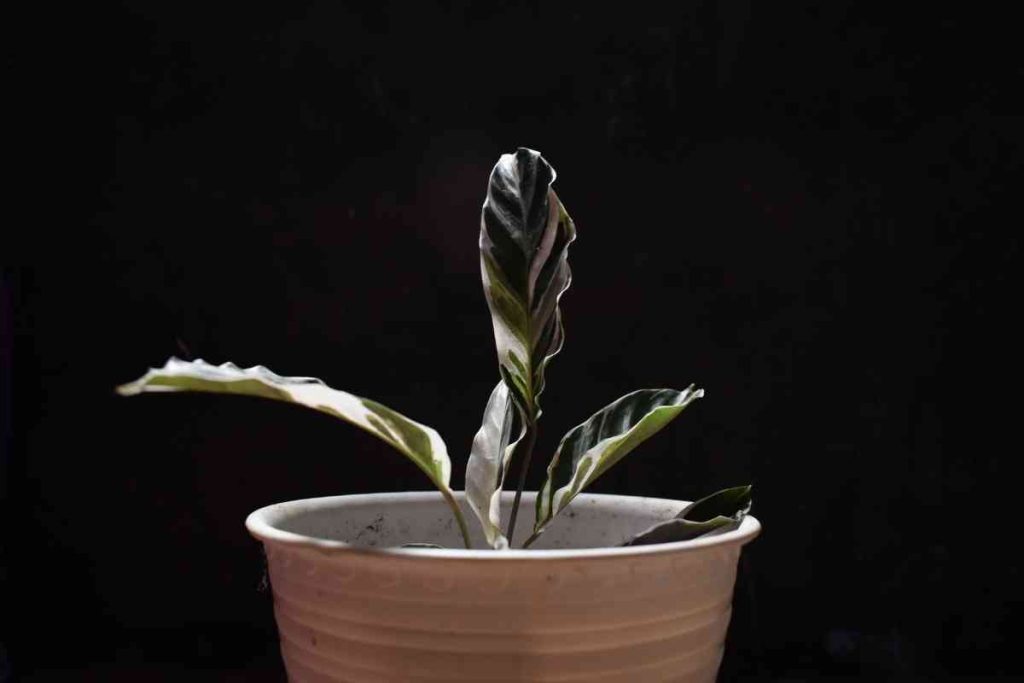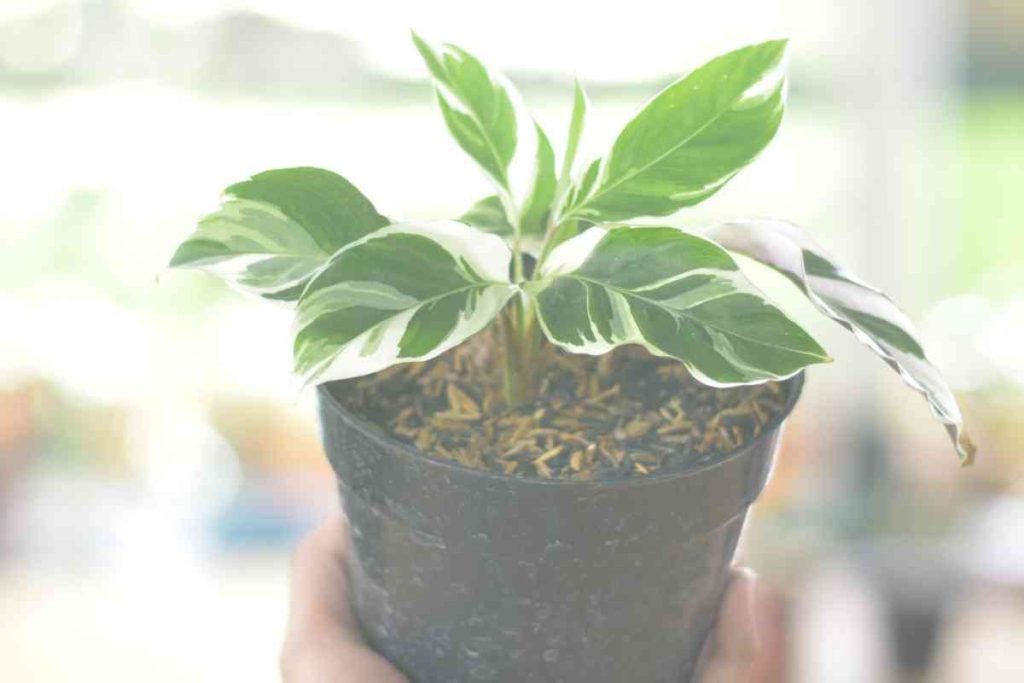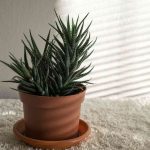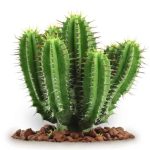To maintain the beauty and attractive looks of a calathea white fusion plant, you need to give it the best extra care possible. It is a very reactive plant; hence, lack of proper care or attention can cause it to express itself, including curling of leaves, to show that something is not right with it.
Leaf curling is usually one of the first symptoms of troubles with calathea leaves. But why is calathea white fusion leaves curling?
The curling in calathea white fusion leaves indicates that the plant is experiencing dehydration, underwatering, low humidity, overfertilizing, excessive heat, or is being attacked by pests.
Table of Contents
What is Calathea White Fusion?
Also known as Peacock, Zebra, or Rattle Snake Plant, the calathea white fusion is a tropical species, which can be grown as houseplants due to the bold markings on its abundant foliage. It is a very popular and interesting houseplant, well-respected because of its coloring.
In other words, it has huge glossy leaves that feature white stripes and edges (which is why it is called calathea white fusion) and a soft purple underside (which earned it its nickname peacock plant).
Most people see it as a queen of prayer-plants (for its habit of folding at night, as if ready for prayers) and comes from the Marantaceae family.
Caring for the calathea white fusion is easy yet can be quite tricky to maintain, as it tends to become a little finicky. In other words, if it lacks enough humidity, water, and other improper conditions, it will react or express itself in such a way that you will understand your mistakes.
Why Is Calathea White Fusion Leaves Curling?

As we earlier discussed in this article, calatheas are very temperamental and expressive plants that like to react in one way or the other when they are unhappy or are not given proper care.
Leaves curling is one of the signs. There are many explanations as to why your calathea white fusion leaves curl, most obvious reasons of them all is as follows:
1. Underwatering
This is the most common reason why your calathea white fusion leaves curl. If your calathea leaves are curling, then the chances are that it has been a long time since you last watered them and they are already dried and thirsty.
If a calathea is dehydrated or lacks water, it will often activate its defense medium to prevent further loss of water from transpiration. This will cause the leaves to curl towards the plant due to decreasing the surface area through which the plants lose moisture.
It is a sign of under-watering when you notice droopy leaves with yellow and brown colors on your plant.
You will also notice it if you use a soil meter probe mid-way downwards to check the plant’s soil moisture level. And if it is not up to 3, then you’ve underwatered the plant.
How to Treat Underwatered Calathea White Fusion
Under-watering troubles of your calathea white fusion are not beyond repair, as you can simply correct the damage done by:
- Ensure that enough distilled or filtered water is available for it to the extent that you can see water draining from the holes underneath.
- Ensuring that you plan a weekly watering schedule, as calathea plants require water at least once every week or whenever the top 2 inches of its soil has lost its moisture.
2. Overwatering
Excessive watering of your calathea white fusion will cause excess water to dwell in its roots, thereby leading to root rot. It will result in dehydration, as the roots will be destroyed; hence, they will no longer be able to soak up nutrients or water.
When you notice any brown color on the leave tips, or you perceive a strong, offensive smell from the plant, it shows that the plant’s root is rotten due to overwatering.
Sometimes, you will discover that the soil is still wet after over 1 week or thereabouts; that means the soil lacks proper drainage, hence, overwatering.
How To Treat Overwatered Calathea White Fusion
Just like under-watering troubles, overwatering issues of your calathea white fusion can also be solved.
All you need to do is:
- Before the next watering activity, ensure that the top 2 inches of the plant’s soil are dry.
- After two weeks and the soil is still wet, you’re free to repot the plant to a fresh container with fresh soil and use good soil mixes like shredded bark, perlite to enhance good aeration and drainage.
- Create a good drainage hole in your pot, if it had none, to ensure adequate drainage of water.
3. Low Humidity
A low humidity rate below 50% can lead to an increase in transpiration in your calathea white fusion, thereby resulting in too much loss of water and subsequently leaving curling.
How To Treat Low Humidity on Calathea White Fusion

- Ensure the humidity levels around the plant is not less than 60%, especially during the plant’s active growth.
- You can increase humidity levels through a humidifier or pebble tray.
- Grouping plants is sometimes required to enhance the distribution of humid microclimate growing environs.
4. Direct Sunlight or Heat Problem
Too much exposure to direct sunlight leads to excessive heat on the leaves, increasing the transpiration rate.
Again, over-exposure to sunlight causes water moisture to evaporate faster, thereby causing the leaves of your plant to curl to reduce water loss.
How to Treat Heat Problem on Calathea White Fusion
- Bring your calathea plant inside during frost season and hot summer seasons to give it the best temperature via the help of a heater or air-conditioner.
- Locate a sheltered window facing the southeast area, as it helps to give the plant enough indirect sunlight.
5. Overfertilizing
Overfeeding your calathea white fusion can result in oversaturation of salt in its soil around the rooting system, thereby removing water moisture from the plant instead of absorbing it. This will lead to dehydration and subsequently curling of leaves.
How to Treat Overfertilized Calathea White Fusion
- Get rid of the plant from the soil and prune every rotten root
- After that, you can fill a fresh pot with new soil and repot the plant
- Later, you can utilize the recommended half dose on fertilizer packaging and a maximum of once a month
6. Pest Infestation Problem
Pest like spider mites is another problem that can lead to curling of your calathea white fusion leaves, as it feeds on the plant tissues and sap, thereby leading to damage of plants and curling of leaves.
How To Treat Pest Infestation on Calathea White Fusion
- Once you discover any infected area, apply neem oil, as it will help to repel these pests
- Use a cotton pad soaked in a little water and soap mixture to wipe the two sides of the plant’s foliage, as it will help to completely get rid of pests
- Cleaning your plants as often as possible can help you trace any pest infestation much earlier
Related Posts:




